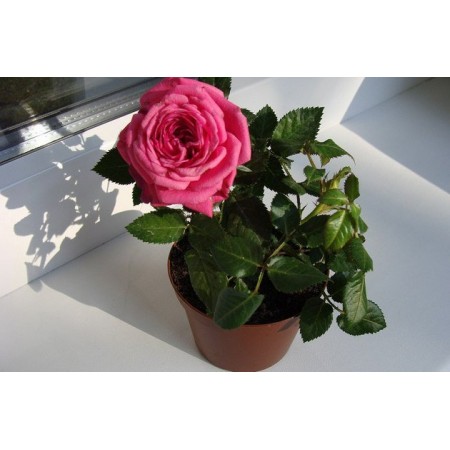Rules for homemade roses

Indoor rose, as a rule, refers to flowers with a not too long period of life. This problem arises due to the fact that after the first flowering period, residents of apartments and private houses simply do not know how to properly care for the plant. But subject to some simple rules, a room rose can please you with lush buds for more than one season.
Choosing the right place for a rose pot and watering
The first and most important point is placing the flower pot in a suitable place. Indoor rose is a photophilous plant, so it is best to place it in a room with a lot of diffused light. Direct sunlight will have a very detrimental effect on the flower, so the window sill on the west or east side of the house will be the best location for it.
In the summer, it is recommended to place the pot with a room rose on a balcony or terrace, where the flower can receive a sufficient amount of fresh air. Of course, if you stably ventilate the rooms, then you can keep it in the rooms. In winter, the flower should be protected from sudden temperature changes.
It is recommended to defend the rose watering liquid during the day, as the moisture from the tap will turn out to be too harsh for it. The use of such water can lead to plant disease, and if you forget about watering several times, then even to the death of the flower.
Temperature and humidity
The optimal air temperature for a room rose will be an indicator of approximately 20 to 23 degrees Celsius in the summer, and from 8 to 10 degrees Celsius in the winter. With an increase in temperature, it will be necessary to increase the number of irrigations, and in winter - to reduce it to once every few days.
Rose is very demanding on air humidity, so it will need to be sprayed from the spray gun every day (or install additional water containers next to the flower). Once a month, it is recommended to arrange a wet shower for your rose using warm water - this will remove dust from the petals and leaves, providing the flower with the necessary amount of moisture.
Feeding and transplanting
Mineral fertilizers will need to be applied to the soil at least once every few weeks, since a room rose is very “gluttonous” and quickly absorbs substances from the soil. For use, mixtures especially for roses, in which there are components necessary for unhindered growth, are best suited.
The optimal period for a rose transplant is the beginning of spring, before the formation of the buds. Care should be taken to ensure that the delicate root system is not damaged during transplantation (the upper soil layer is removed, but the lower one must not be touched). For transplantation, special soil should be purchased, consisting of sand, sheet and turf soil.